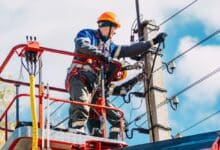A Look Ahead at Advanced Driver Systems
Gary Christmas – Christmas Injury Lawyers – https://christmasinjurylawyers.com/
As technology continues to advance in the automotive industry, the reality of autonomous vehicles is getting closer and closer every day. Advanced Driver Assistance Systems (ADAS) are moving forward in an attempt to bridge the gap between driving today and the driving of the future.
Motor vehicles of all kinds are beginning to take on even more tasks to automate the safety of drivers, passengers, and others on the road. Across supply chains, developments in AI technology and software are starting to take shape.
Increased Safety, Autonomy, and Confidence
ADAS technology plays a large role in removing or reducing human-related errors and increasing the safety of everyone on the road. In a 2018 survey, 36% of participants indicated that advanced driver assistance systems are a key element in
their companies’ automotive visions. Driver assistance systems such as blind spot monitors, tire-pressure monitors, adaptive cruise control, lane-tracing assistance , and more are already offered in standard vehicles by some automakers.
The positive trends that can be linked to some of these driver assistance programs can be seen in the National Safety Council reports. Between 2016 and 2017, the highway fatality rate dropped by 1.8% after years of increases. Fatalities decreased again by 4% and then another 2% in 2018. Trends indicate that fatalities will continue to drop in the coming years. However, traffic and road accidents do still happen because of distracted, reckless, or impaired drivers. There is much more technology in the development of ADAS that will contribute to increasing the safety of everyone on the road.
One of these developments is sensor-fusion. This system is the use of multiple types of sensors for the same application. Sensors are already widely used in the automotive industry as a form of driver assistance. However, typically, one type of sensor cannot safely monitor the conditions around a car in all situations. For example, cameras on a vehicle may not be able to recognize some objects in low-visibility conditions such as darkness, fog, or even blinding lights from other vehicles or the sun. With the imminent progress of autonomous vehicles, some types of sensors that can help include ultrasonic and radar sensors.
Ultrasonic sensors
These sensors send out short ultrasonic impulses which are reflected back by obstacles. Unlike current sensors such as LiDAR, they are able to “see” through objects. And unlike cameras, ultrasonic sensors are unaffected by fog or low-light conditions. Although they have a shorter view than light detection and ranging (LiDAR) and lack resolutions to detect multiple objects moving at fast speeds, this type of sensor can be extremely useful for assisted parking.
Radar sensors
These sensors use frequency modulated continuous wave radar (FMCW) to recognize moving and stationary targets. These sensors are ideal in object, vehicle,
and pedestrian detection, but can also be used for long range detection. They are unaffected by extreme weather conditions, which makes them reliable. Their flexible mounting also makes installation and maintenance safer, easier, and more effective.
Combining these multiple sensor types allows Advanced Driver Assistance Systems to create a “redundant monitoring system” where different types of sensors are used for the same application. This ensures the right information is always available to the vehicle, regardless of the road conditions. These systems include a variety of sensors including cameras, LiDar, radar, and driver monitoring systems. It may not be long before these safety features become standardized in the automotive industry.
Braking System Trends
Automatic emergency braking, or autonomous emergency braking (AEB) is already becoming increasingly common in new car models. These AEB systems are one of the most important road safety advances and can be considered just as important as seat belts.
Additionally, Knorr-Bremse made key changes to its organizational structure in early 2020 to better serve their regional segments and made moves to address global market needs. Through this process, they have created a modular approach on a global scale. Recently, Knorr-Bremse introduced their global scalable brake control, or GSBC. This brake control system is adaptable to meet a variety of customer needs and begins to lay the groundwork for automated vehicle systems. This GSBC system can be implemented on trucks that are equipped with anti-lock braking systems (known as ABS) or with electronic braking systems (EBS).
ABS has been the standard braking assistance system for North American trucks for decades, while EBS has been widely adopted throughout the European market. The new GSBC sets up Knorr-Bremse to deliver a standard product available for either type of braking system preferred in various markets. It is also predicted that EBS will likely replace or supplement the ABS system in North American commercial trucks in the future.
Automotive Trends
The megatrends in the automotive industry like automation and e-mobility have been advancing all around the world. However, North America and China have been at the forefront of accelerating development of these automated technologies. In North America, this progress can be attributed to the advancements in legislation and the need for commercial vehicle operators due to the driver shortage. Similarly, China is looking to work toward automated vehicle technology adoption with the support of their local governments.
The evolution of EBS over ABS and the adoption of air disc brakes are just the beginning. Changes are starting to be seen in this next stage of automation and electrification, especially in North America. The North American market is advancing at a much faster pace than people expected. This faster pace may be attributed to non-traditional truck manufacturers entering the commercial vehicle space with advanced technology and products. Companies like Tesla and Nikola have surely had an impact. They have put a different type of demand interest into fleets which could be translating to higher levels of activity.
The Impact of Knorr-Bremse
Bendix and Knorr-Bremse have also looked into assisting with this acceleration in automated technology development. Both brands are well known in their industry and have served the global braking industry for more than a century. Their large footprint in braking has confirmed that Knorr-Bremse has looked into acquiring steering system providers in order to address the next generation of technologies. In a most recent acquisition earlier this year, Knorr-Bremse finalized a deal to acquire RH Sheppard. Prior to this deal, they had also gone through multiple other transactions, such as with tedrive Steering Systems in 2016 and Hitachi Automotive Systems in 2019.
The focus on steering and braking systems can be easily explained. The control of full vehicle dynamics, which is necessary for development in advanced driver assistance systems and automated driving, depends on the two main systems of the
vehicle: braking and steering. This pairing can be referred to as motion control, which allows the braking and steering systems to communicate and work together. Examples of this can already be seen in current driver assistance systems—such as in lane keep assistance and lane centering. Additionally, the foundation torque overlay will allow for further advancements to the steering system that will not require driver interaction with the vehicle.
In comparison with regular passenger vehicles, advanced driver assistance systems on trucks today include additional variables that contribute to a much more complex decision-making process in order to ensure the safety and efficiency of the vehicle. Some of the factors that need to be considered include how the truck is loaded, how it behaves, road conditions, whether it is icy or dry, and the ability for the implemented systems to understand and react together with the driver. It makes for a level of complexity in automation that is very challenging.
Looking Ahead
It is well known that to move beyond the current technology available on the road today, the development to full automation will require the use of artificial intelligence (AI). There has been strong interest at Knorr-Bremse, as AI companies have started to develop demonstrations and introduce oaths that will allow automation to take hold in the North American market.
The standardized brake control technology, GSBC, is a great example of a product that is scalable and meets the needs of various global markets and could be used as a redundant system for automated vehicles. Redundant systems in trucks are a focus for automakers, as they have a responsibility to bring the truck to a safe stop even if there is an instance of a problem or a failure.
The advancement of these technologies will not only increase development, but also increase the safety of those on the road in both cars and trucks.


